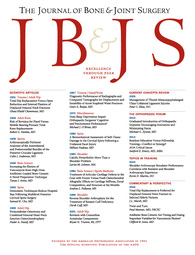
Arthroplasty
Lumbar plexus block vs periarticular infiltration with ropivacaine or liposomal bupivacaine in THA
J Bone Joint Surg Am. 2017 Nov 1;99(21):1836-1845165 patients scheduled for total hip arthroplasty were randomized to one of three groups for postoperative analgesia: periarticular infiltration with ropivacaine (PAI-R), periarticular infiltration with liposomal bupivacaine (PAI-L), or peripheral nerve block (PNB) via a continuous lumbar plexus block. The primary outcome was maximum pain severity experienced during the morning of postoperative day 1. Results demonstrated statistically significantly lower pain among patients administered the continuous lumbar plexus block compared to periarticular infiltration analgesia with ropivacaine; the differences between the PAI-L group and the PAI-R group, and the PAI-L group and the PNB group, were not statistically significant.
Unlock the full article
Get unlimited access to OrthoEvidence with a free trial
Start TrialCritical appraisals of the latest, high-impact randomized controlled trials and systematic reviews in orthopaedics
Access to OrthoEvidence podcast content, including collaborations with the Journal of Bone and Joint Surgery, interviews with internationally recognized surgeons, and roundtable discussions on orthopaedic news and topics
Subscription to The Pulse, a twice-weekly evidence-based newsletter designed to help you make better clinical decisions
Exclusive access to original content articles, including in-house systematic reviews, and articles on health research methods and hot orthopaedic topics
Or continue reading this full article
Register Now

Subscribe to "The Pulse"
Evidence-Based Orthopaedics direct to your inbox.




































